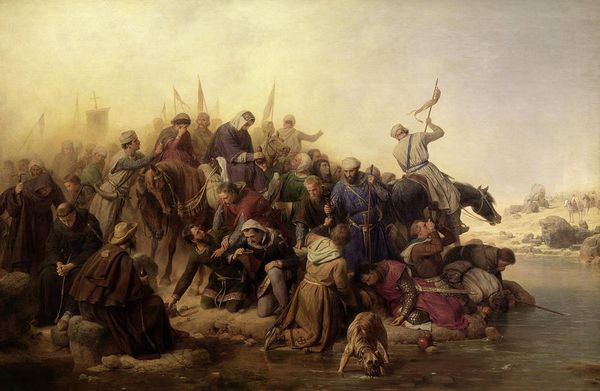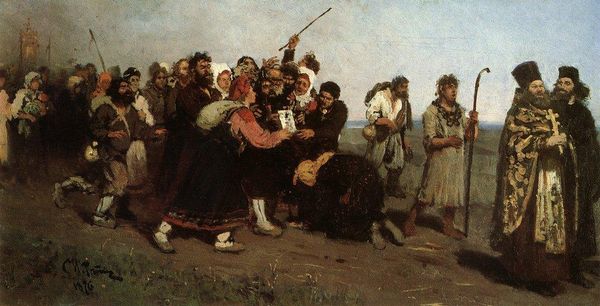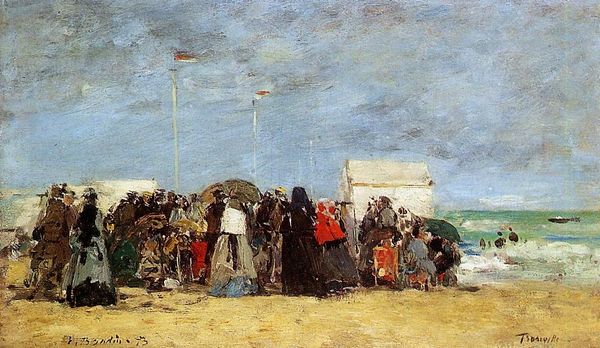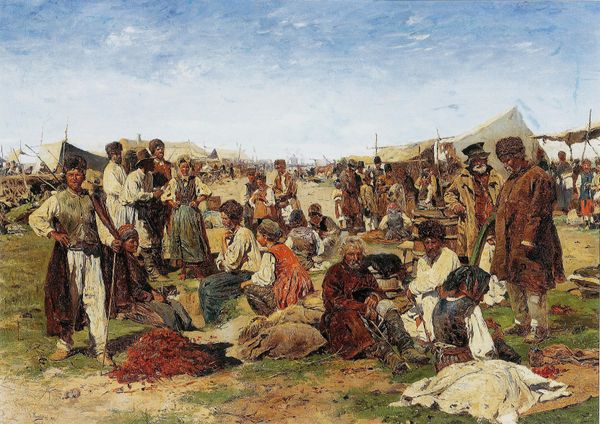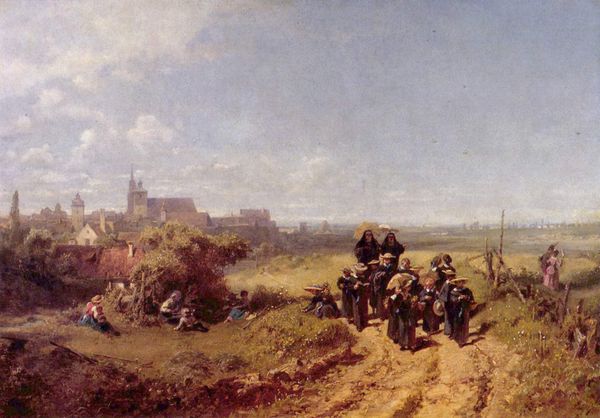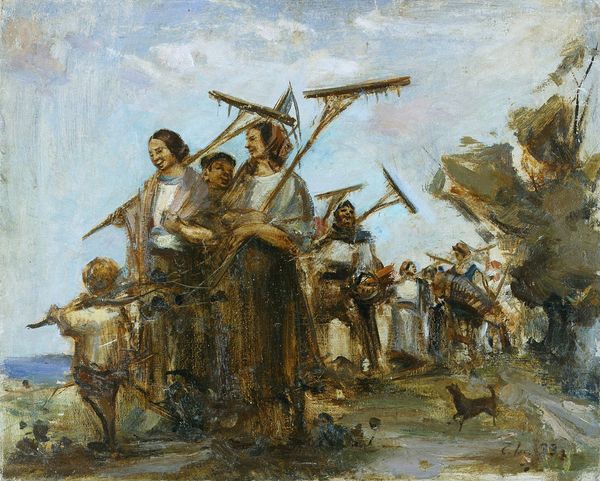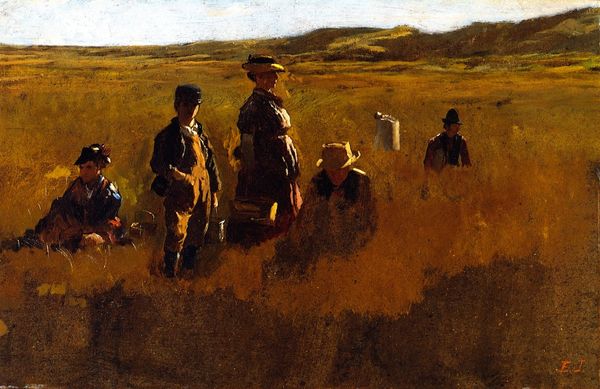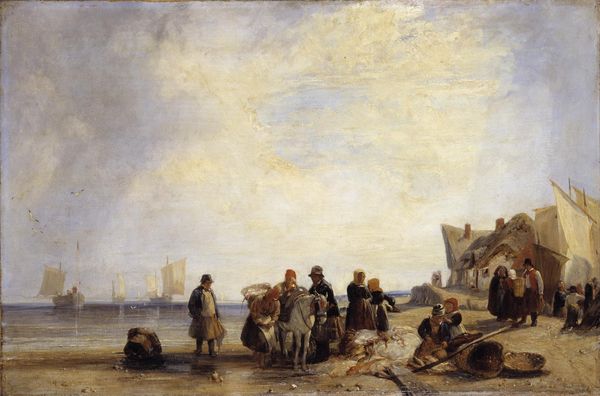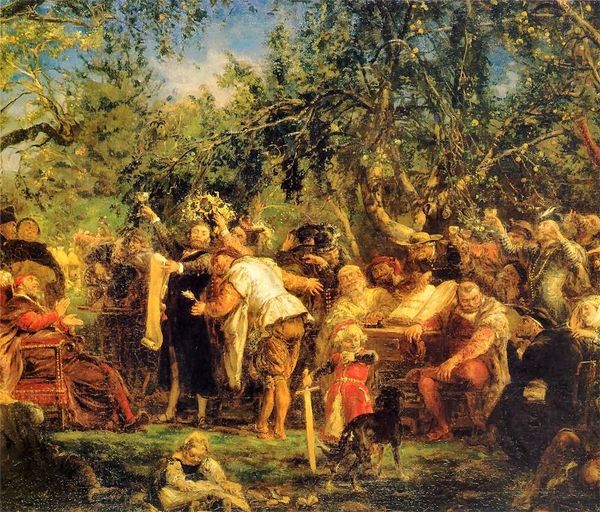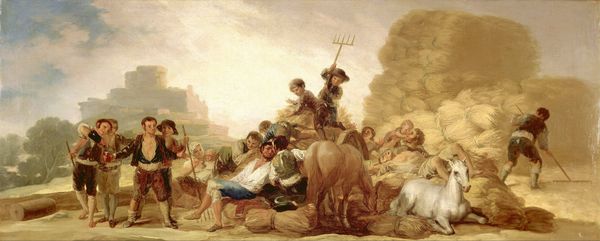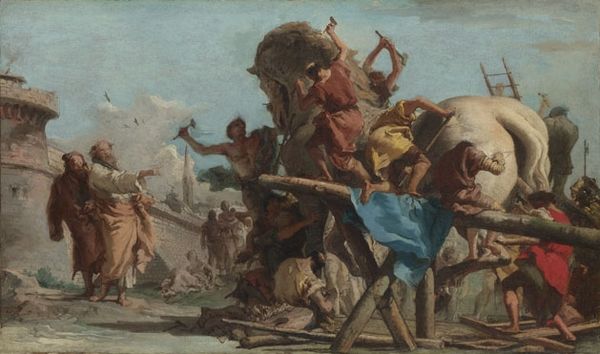
painting, plein-air, oil-paint
#
narrative-art
#
painting
#
impressionism
#
plein-air
#
oil-paint
#
landscape
#
charcoal drawing
#
oil painting
#
group-portraits
#
painting painterly
#
genre-painting
#
academic-art
#
realism
Dimensions: 24.8 x 35.6 cm
Copyright: Public domain
Editor: Jules Breton’s "The Vintage at Chateau Lagrange," created in 1862 using oil paint, offers a fascinating glimpse into rural life. The subdued palette and slightly blurred figures create an atmosphere that feels both timeless and immediate. What catches your eye when you consider the formal elements? Curator: Immediately, I note the dynamism achieved through a complex arrangement of forms. The figures are clustered, yet each is articulated through carefully observed tonal variations, and a deliberate composition and painterly treatment invite detailed reading and consideration. Notice how Breton orchestrates the human forms against the subdued tones of the landscape to create an ordered effect from a scene of work. Are you interested in the perspectival choices here? Editor: Yes, absolutely. How does the artist's rendering of perspective influence the viewer's interpretation of the scene? Curator: The slightly elevated, panoramic viewpoint grants us an encompassing perspective, framing the harvesting activity within a broader environmental context. This isn’t merely documentation, of course, but a constructed visual order. Observe how Breton guides our gaze—from the foreground activity to the implied distance, facilitated by subtle atmospheric perspective and the precise arrangement of the human subjects to suggest depth and recession, contributing significantly to the thematic complexity of rural toil. Editor: That makes perfect sense. I hadn't considered how deliberately he was guiding my eye through the scene using all these elements. It changes the way I see the painting. Curator: Indeed. Paying such close attention to these elements provides more enriching perspectives and enlivens the dialogue between artwork and audience.
Comments
No comments
Be the first to comment and join the conversation on the ultimate creative platform.


